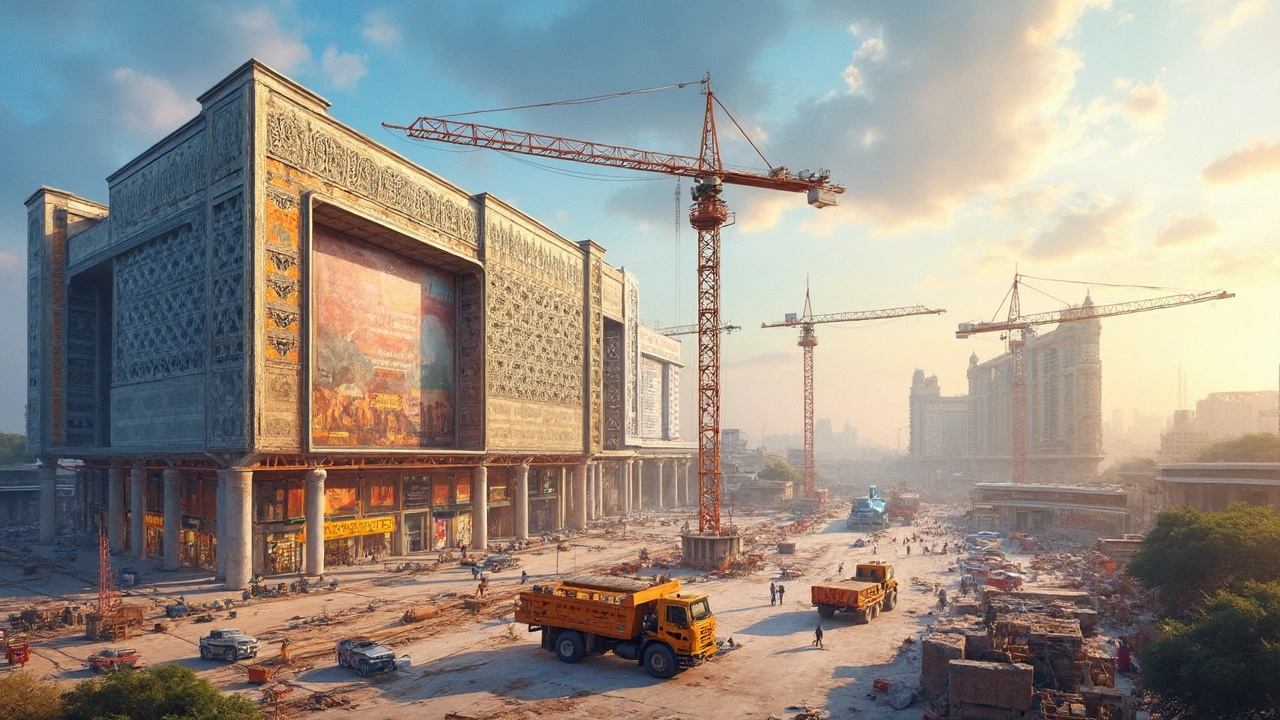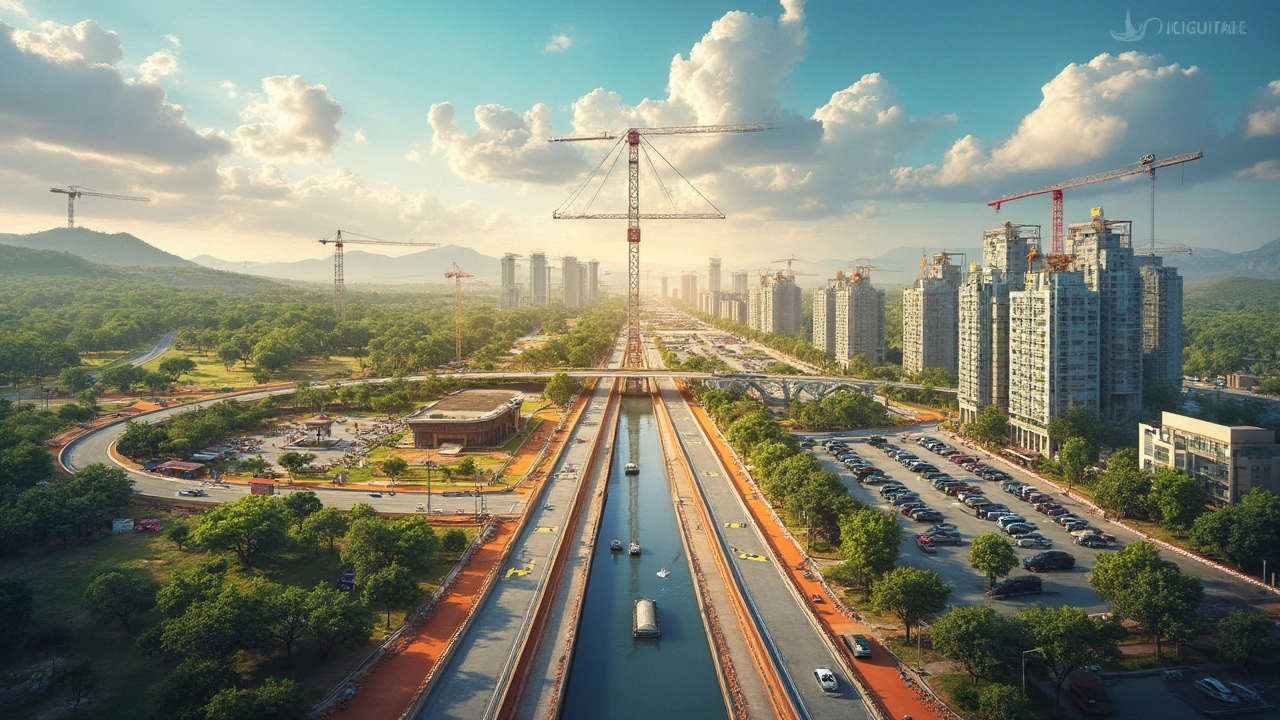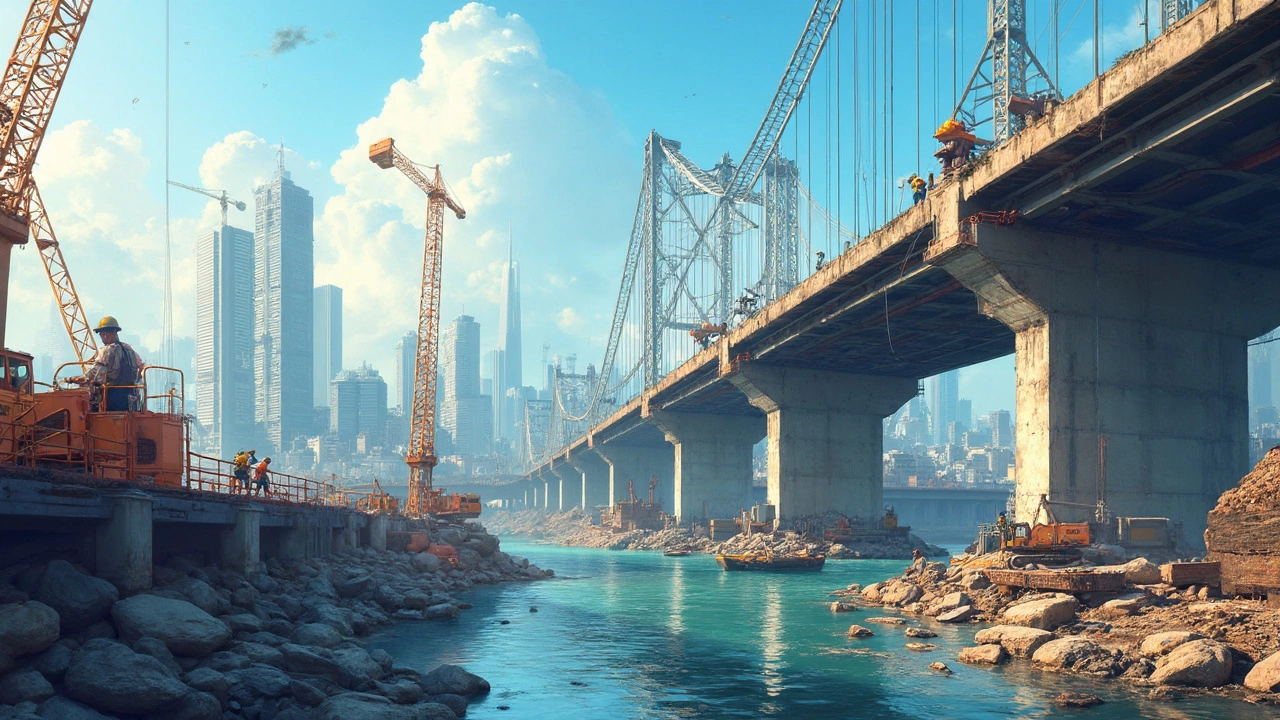When folks talk about construction, they're usually referring to one of two main categories: civil and commercial. Though these terms might seem interchangeable to those outside the industry, they're quite distinct in what they involve. Knowing the difference can make a world of a difference if you're thinking of starting a project or just curious about how all those buildings and bridges come to life.
Civil construction is all about infrastructure. Think roads, bridges, and dams—the big stuff that keeps cities and towns running smoothly. It's the backbone of any community, ensuring everything from transport to water systems functions as it should.
On the flip side, commercial construction zeroes in on creating spaces for businesses. Whether it's a grocery store, office building, or shopping mall, commercial projects focus on places where us regular folks shop, work, and hang out.
- Defining Civil Construction: What It Involves
- Overview of Commercial Construction
- Key Differences in Materials and Techniques
- Project Management and Cost Factors
- Licensing and Legal Considerations
Defining Civil Construction: What It Involves
Civil construction is a massive field, dealing with the design, building, and maintenance of infrastructures that help society function in its day-to-day life. If you've ever navigated a winding road or crossed a sturdy bridge, that's civil construction at work. This sector is all about big projects that benefit the community. We're talking roads, highways, bridges, tunnels, and even airports and water systems.
The goal of civil construction is to create essential public structures. These are projects funded by governments or large private sector companies, predominantly aimed at improving infrastructure across different regions. Engineers and contractors work together to ensure these projects meet safety standards, are durable, and can handle the demands of daily use.
Materials play a big role here. You'll often find steel, concrete, and asphalt at these sites because they’re strong and long-lasting. Plus, civil construction often has to deal with rough environmental conditions, which means choosing the right materials is crucial.
There's also a heavy emphasis on project management in civil construction. Given the scope and scale of these projects, they need efficient coordination, planning, and execution. They often run on tight schedules and have several phases, from initial planning and design to construction and maintenance.
It's worth noting that civil projects are highly regulated. This ensures they meet all safety standards and public requirements. Licenses, inspections, and permits are all part of the game to ensure each project is sustainable and safe for public use.
Overview of Commercial Construction
Commercial construction is the engine that builds our everyday environment, creating spaces that support businesses of all sizes. Whether it's office buildings sprouting up in city centers or the retail spaces sprawling across the suburbs, it forms the backbone of our urban jungle.
In essence, commercial construction involves designing and building structures intended for commercial use, so anything from restaurants and shopping centers to skyscrapers and hospitals falls under this umbrella. It's more about utility and functionality tailored to business needs. Picture a bustling downtown, and what people think of as 'commercial construction' is what builds that image.
What sets commercial construction apart from other building types is its focus on the client—the business owner. This means creating an environment that boosts business operations while keeping future growth in mind. Plus, it's about meeting strict codes and regulations, designed to ensure safety and accessibility for everyone who walks through those doors.
A commercial construction project typically unfolds in several stages:
- Planning and Development: This phase is where blueprints and designs are drawn up, focusing on maximizing space efficiency and adhering to zoning laws.
- Design and Engineering: Architects and engineers work their magic to bring the vision to life, ensuring everything meets structural integrity standards.
- Construction: The tangible work begins here, with contractors managing everything from laying foundations to the final touches.
- Post-Construction: Once the dust settles, it’s time for inspections and the finishing touches to ensure everything is up to code.
Budget is key in commercial construction, often influencing the choice of materials and the scale of the project. For instance, high-end office buildings may sport cutting-edge technology and sleek designs, while smaller retail spaces might prioritize cost-effective solutions.
Statistics from recent years show that the global commercial construction market is a massive player in the economy. In 2023 alone, it was valued at an impressive £10 trillion, reflecting the high demand for versatile and modern business spaces. This rising trend shows no sign of slowing down as economies expand and urbanization accelerates.
In the end, commercial construction goes beyond bricks and mortar—it's about creating environments where businesses can thrive, crafting spaces as dynamic and vibrant as the communities they serve.

Key Differences in Materials and Techniques
When it comes to civil construction, the materials used are all about strength and durability. Think steel, concrete, and asphalt. These projects need to stand the test of time and weather all sorts of conditions, from heavy rain to scorching heat. The techniques used here are often large-scale and involve heavy machinery, meaning precision is key.
For commercial construction, the materials shift a bit. While durability is still important, aesthetics and functionality take center stage too. You'll often see a mix of materials like glass, wood, and specialized metals that provide both the durability of infrastructure and the eye-catching appeal of a business space. Techniques here can be more varied, involving everything from intricate carpentry to advanced HVAC systems.
Let's also talk about scale. Civil construction projects can be enormous, covering miles of land, whereas commercial construction often focuses on single-property sites, sometimes in tight urban spaces. This means the tools and skill sets can be quite different. For instance, civil work might require digging deep into the earth, so you'll see a lot of excavators and bulldozers. On the commercial side, you might have cranes and scaffolding systems to build upwards.
Tackling a civil project typically involves techniques that have been fine-tuned over decades, while commercial work may employ the latest technologies and design trends to appeal to modern sensibilities. The choice of techniques can also impact the timeline. Civil projects can take years due to their sheer size, while commercial projects might wrap up faster to meet business opening deadlines.
In short, understanding these material and technique differences can help you make smart choices about which professionals to hire and what tools to bring to the table. Whether you're paving a highway or building a high-rise, getting it right is all in the details.
Project Management and Cost Factors
Diving into the nitty-gritty of project management, both civil construction and commercial construction come with their unique challenges. For civil projects, planning often involves navigating public policies, environmental regulations, and dealing with unexpected weather conditions. In contrast, commercial projects focus more on adhering to the business's specific aesthetic and functional requirements.
Cost-wise, both types of construction require a clear financial roadmap. For civil construction, government budgets usually dictate how funding is allocated, impacting everything from materials used to labor costs. Commercial construction, however, depends heavily on private investments, which can offer more flexibility but also come with higher expectations for a return on investment.
When it comes to timelines, civil projects often span longer periods due to their complexity and scale. Think of those groan-inducing roadworks that seem to last forever. Commercial undertakings, on the other hand, might have tighter deadlines since every day of delay could mean lost business opportunities.
- Materials and equipment: Civil projects might use materials like steel and concrete that can withstand massive weight and weathering. Commercial buildings, meanwhile, may focus on eco-friendly materials to attract environmentally conscious clients.
- Labor costs: Skilled labor is crucial in both areas, but commercial projects might pay more for specialists like architects or interior designers.
- Regulations: Both projects need to comply with local building codes, but civil construction often has the added layer of public scrutiny, especially when taxpayer money is involved.
Curious about how these factors stack up in the real world? Here's some data to chew on:
| Project Type | Avg. Timeline | Rough Cost per Square Meter (£) |
|---|---|---|
| Civil Construction | 6 months - several years | 2000 - 3000 |
| Commercial Construction | 3 months - 2 years | 1500 - 2500 |
Balancing these elements is no walk in the park. Effective project management in both civil and commercial settings requires juggling finances, timelines, and expectations, all while keeping eye on the end goal: a successful, functional project.

Licensing and Legal Considerations
Diving into the world of commercial construction or civil construction involves more than just bricks and mortar. One major piece of the puzzle is getting the right licenses and sticking to the legal requirements. This isn’t just red tape—it's essential to ensure safety and compliance throughout your project.
First off, any contractor you hire should have the appropriate licenses. In the UK, this often means being part of the Federation of Master Builders (FMB) or a similar professional body. These organizations make sure that contractors meet certain standards and follow industry best practices. Having a properly licensed contractor means you're more likely to get quality work and avoid unnecessary legal hassles.
Besides general licenses, there are specialized certifications for handling different types of work, like electrical or plumbing. Make sure your project’s team covers all these bases to avoid future headaches.
Legal considerations also include zoning laws and building codes, which dictate what can and can't be built in a certain area and under what conditions. For example, commercial construction in a busy city like Manchester might face stricter rules compared to a rural area. Ignoring these can mean costly fines or worse, having to redo parts of the project.
Keeping up with health and safety regulations is crucial too. The UK’s Health and Safety Executive (HSE) sets strict standards that constructions sites must follow to protect workers and the public. This involves everything from wearing helmets to ensuring proper waste disposal.
Here's a quick reminder: Neglecting licensing and legal requirements can not only slow down your project but also inflate costs. So, staying informed and compliant helps keep your build on track without unpleasant surprises.
